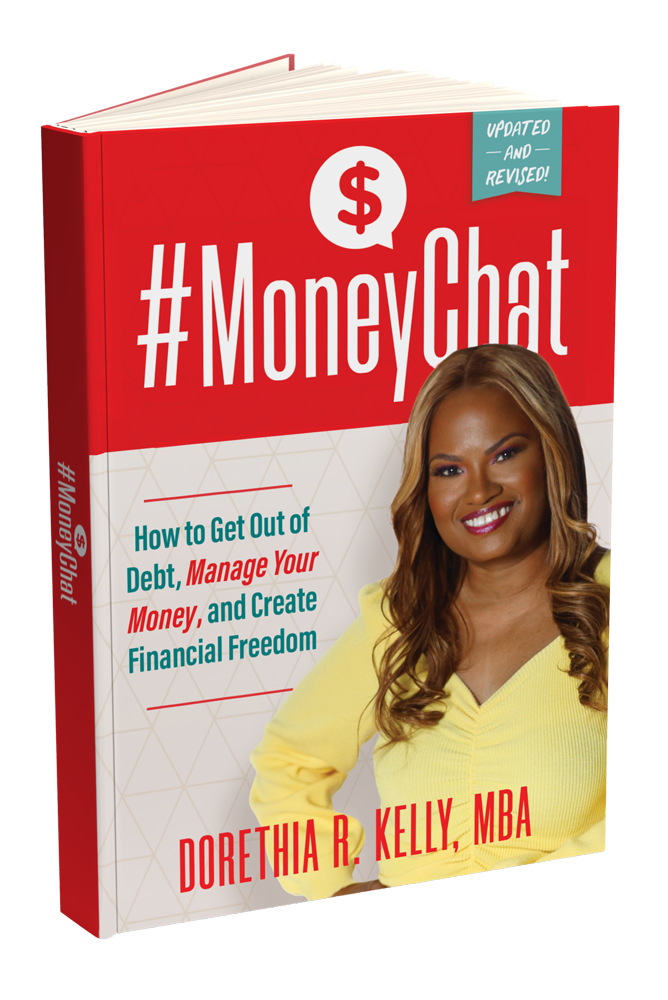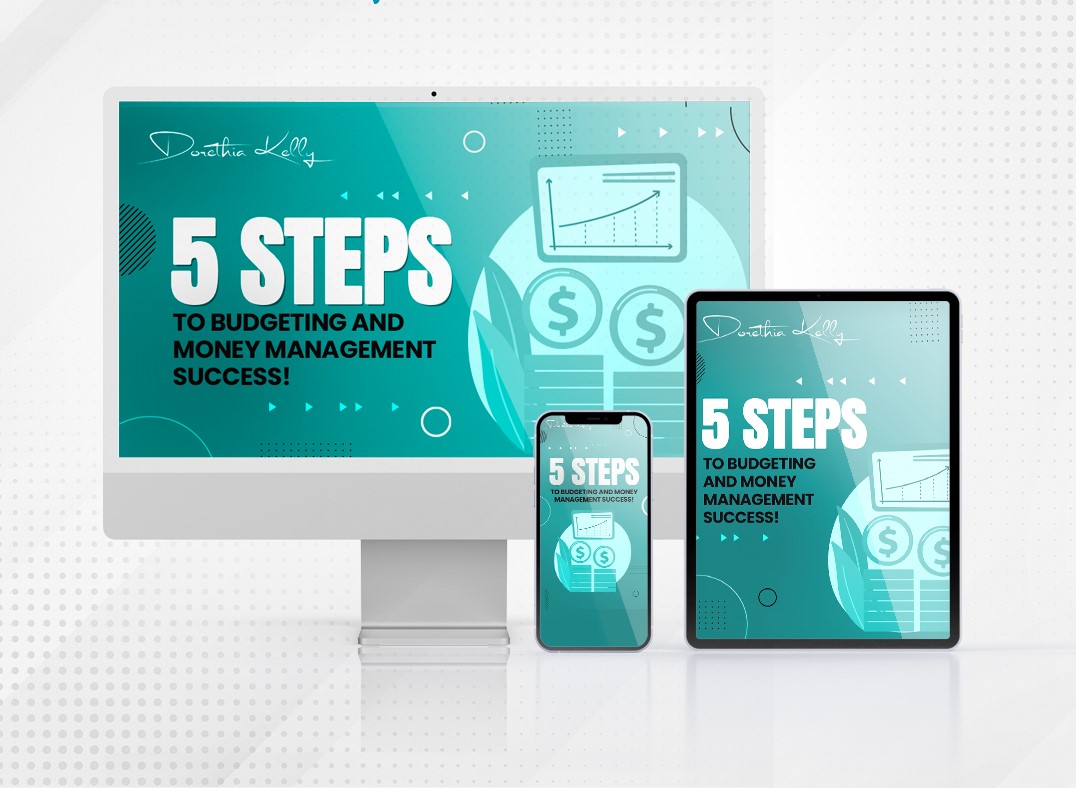Everything You Need to
Know About Budgeting!
You want financial freedom, but honestly, you don’t even know what it looks like or how to achieve it.
You aren’t alone.
Millions of Americans don’t know how to manage their money, so they become financially independent. Personal finance isn’t something taught in school at great lengths and many people get so caught up in other areas of their lives that personal finance takes a back seat.
No matter your age or financial situation, there’s no better time than now to learn to budget and find financial peace.
What is a Budget?
Budget is a word no one likes. You hear it and you think ‘restriction or sacrifice, ‘right?
What if that’s not the case?
What if you looked at it as a spending plan rather than the ‘B’ word? It’s a little mind trick you can play with yourself to make budgeting more natural and less stressful and it can help with your personal finance planning.
By definition, a budget is a plan for your money. It accounts for your cash inflow (income) and outflow (expenses, spending, etc.). There’s no right or wrong way to do it. The key is to find a method that you’ll use consistently and will stick to.
It’s not something set in stone – you can adjust as you go. In fact, giving yourself some grace is the best way to achieve your financial goals. It’s not an all or nothing situation. You’ll have good months and bad months and that’s okay.
As long as you stay on track most of the time, you’ll feel much more at ease and as if you are in control of your money versus your money being in control of you.
Budget/Spending Plans are Your Roadmap!
You may still be wondering how a spending plan can help you achieve your goals. It doesn’t make more money appear, so how could it help you?
It comes down to planning. When you have a plan for your money, it’s easier to not spend what you don’t have. Think of it like a roadmap. Would you jump in the car and just drive, hoping you make it to your destination?
Probably not, or at least we hope not.
Instead, you’d put the address in your GPS and let it tell you where to go, and how to get to your destination the fastest.
Think of your financial goals as your destination and your money as the vehicle to get there. A spending plan tells you which direction your money must go to stay on track with your monthly expense, save and invest. It also helps you keep your debt-to-income ratio under control, which is the key to a successful financial future. We also can’t forget about the FUN stuff… it’s important to build it in.
It’s a combination of maintaining good credit (paying your bills on time) and saving enough money for things like emergencies, retirement, family vacations, college education, or buying a house. This creates financial freedom… which leads us to…
What is Financial Freedom?
Financial freedom doesn’t have a set definition because it looks different for everyone. In short, it means you have more than enough money in your spend, save, and retirement account to provide for your family and achieve your family’s goals.
- Not living paycheck-to-paycheck;
- Ability to handle most emergencies that pop up and…
- You have a plan for your future, especially retirement.
Does it come easy?
No, it doesn’t, but with enough practice and consistency, anyone can reach what they consider financial peace or ‘easy street,’ and it all starts with a budget.
7 Habits that Help you Achieve Financial Freedom
So how do you achieve financial freedom if you’re starting from scratch and feel like you’re in over your head in debt? Here are our 7 favorite personal finance tips.

Make a Decision
The first step is to make a decision that you will do whatever it takes to create the financial life you want. This doesn’t mean deprivation, but being intentional about smart money management. It is about what you tell yourself when the urge to splurge pops up. Remind yourself that short-term habits hurt you in the long-term. Keep repeating positive self-talk so you stay focused

Emergency Fund
No one can predict what will happen in life. An emergency fund should be there to help you during the worst times (illness, losing your job, etc.). Start by saving $250, $500, etc. until you reach $1,000 initially. Once you pay off your debts, you then go back and save 3 to 6 months of expenses (not income)

Pay off Your Debt
Choose method that works for you and pay off your debt. We are a fans of the ‘Debt Snowball’ method because it just works. List your debts smallest to largest and pay them off in that order. Even if you feel like you’ll never get out of debt, there is a way, and it starts with paying more than the minimum payment each month.

Retirement Account
Things may be tight and you think there is no extra money, but try to find the minimum amount you can to start saving for retirement. If you have a 401K and your employer matches a portion of your contribution, work it into your budget to maximize these contributions to get the ‘free’ money.
If you don’t have a 401K, open an IRA and set up automatic deposits so you regularly contribute to your retirement.

Keep Track of Your Credit
Everyone gets free access to their credit report at www.annualcreditreport.com. Right now, you get free weekly access so there’s no reason to not track your credit. If you notice errors, fraudulent activity, or mistakes you made, work on fixing the issues right away so your credit score improves.
A high credit score paves the way for more attractive financing options, which means more money in your pocket with lower interest rates and fees when you need to borrow money.

Cut Spending
I know, no one wants to hear this, but remember it’s just temporary. We’re all programmed to assume we must spend every dollar we bring in – it’s called lifestyle creep and it robs you of your financial freedom. Instead, cut back on spending as much as you can. Use the money you free up to pay off debt or save for the future.
When you pull your bank statements for the last 12 months and evaluate your spending, you’ll likely see areas you can cut back, saving you money every month.

Invest aggressively
The younger you are when you invest, the more aggressive you can be with your portfolio. Taking risks can provide you with a higher rate of return, but you can only be aggressive when you have a long time before your financial goal matures. As you get closer to the date you’ll need the funds, you should make your portfolio more conservative to ensure you don’t have a total loss close to the time you need the money.
Steps to Creating a Budget/Spending Plan
Alright, now that I know what it is, how do I create one? Sooo glad you asked!
It can feel overwhelming at first, but with these steps (take them one at a time), you’ll get closer to reaching your financial goals.
Determine your Income
You can’t create a spending plan unless you know how much money you bring in. If you work on salary, it’s easy – divide your total salary by 12 months. If you don’t get paid a salary, look at your W-2s, paystubs, or bank statements to total your monthly income, but we have an easy accounting trick you can use as well!
The average number of hours worked in a year is 2080. Multiply that by your hourly pay and you’ll get to your annual salary.
Ex: 2080 x $35/hr = $72,800 per year
Don’t forget, if you work any side gigs, part-time jobs, or have passive income to include that money in your total too.
Categorize your Expenses
Your expenses are the key to creating a solid budget. The best way is to pull your bank statements from the last 12 months and write down every expense you paid. This includes fixed bills (mortgage, car payment, student loans, etc.) and variable expenses, such as those that only occur once or twice a year.
In your expenses, include gifts (holiday, birthday, etc.), ‘fun’ money, and any other money you regularly spend. Categorize your spending so when (or if) you must cut back in certain areas, you’ll easily see which category needs the most help.
Create a Budget
This is where the fun part happens. (don’t roll your eyes!!) Your job is to make your expenses fit into your income. In other words, you should spend less than you make.
You can use pen and paper, create a spreadsheet, or use one of our favorite budgeting apps to make it easy to create your spending plan.
If you need a little more guidance, here are two of our favorite types of budgets:
- 50/30/20 Budget – Allocate 50% of your income to your fixed/necessary expenses, 30% to ‘wants’, and 20% to debt payoff and/or savings to reach your financial goals
- Zero-based Budget – This budget gives every dollar a ‘home.’ At the end of the month, your budget should show $0 not because you’re broke, but because you put every dollar somewhere whether they paid bills, bought you groceries, went into your retirement account or the fun fund.
There’s no right or wrong pay to plan your spending… well, except NOT doing it. As long as you track your income and every dollar spent, you’re on your way to achieving your financial goals!
Grab your free training and budget templates to help you map it all out!
Next Steps – Get Started Today!
Budgeting your way to financial freedom isn’t as hard as it seems. With the right steps, you’ll see progress, even if it’s in baby steps. The more money you save for your future, the easier it will be to achieve financial freedom.
If you’re ready to take your personal finances to the next level, snag this free training 5 Steps to Budgeting and Money Management Success PLUS a free, easy to use budget template!
Let’s Connect











